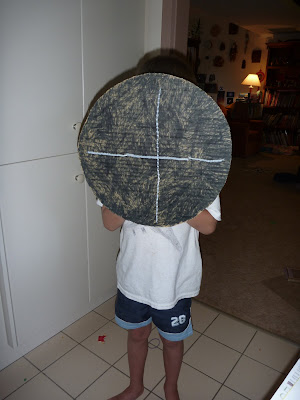Making ancient Greek “hoplons”
The ancient Greek foot soldiers were called hoplites. This
word comes from “hoplon,” the shield each had to carry.
Each hoplite provided his own armor. The shield was made
of bronze and leather. Each hoplite could choose the
decoration on his shield and often used a symbol of
his family or city.
The shield was very important, so much so that in Sparta
it was against the law for a hoplite to leave his shield
behind in the battlefield. According to Plutarch, King
Demaratus of Sparta explained “This is because they
put on the [helmet and breastplate] for their own
benefit, but their shields for the sake of the battle-line
as a whole.” (Plutarch, Moralia, III, 220, 2.)
[From The Soldier Through History]
























































